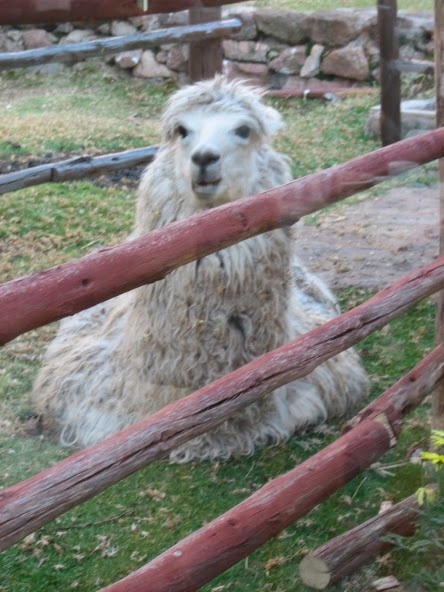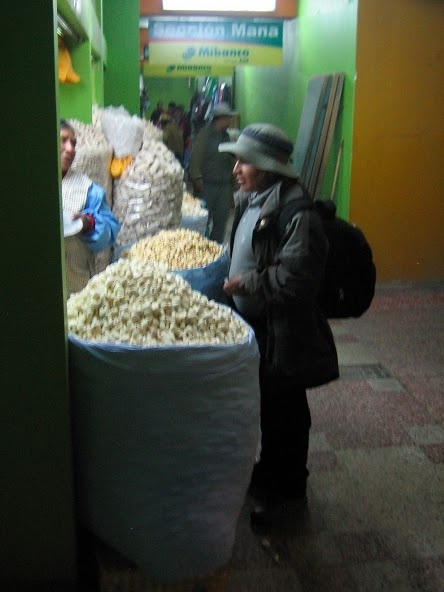Weddings:
In typical Peruvian culture, weddings are festive celebrations that last 3 days. Not unlike our weddings, the bride & groom are the center of attention and everyone parties in their honor. In Taquile, weddings last 8 days. Sounds awesome right? I wish my wedding lasted a full week! Well it's not so fun for the bride & groom. They must spend 3 days kneeling in meditation, not allowed to move while the rest of the village enjoys the festivities. Their parents sacrifice a sheep in their honor and give them the sheep's skin to kneel on. You'd think it's a kind gesture but it turns out to be the worst part. The sheep skin is not cleaned so the tics crawl on to the couple's skin and bite them. They must endure this the entire 3 days without moving!
The women here have beautiful shiny long black hair. However, when they get married they must cut it all off and use the hair to make a belt for their future husband. They mix their hair with alpaca hair and make a really beautiful belt that the husband wears for the rest of his life. The belt is very thick and sturdy and is worn like a girdle so it supports his lower back. They also say it helps the kidneys and prostate so in essence the bride is making a belt to protect the health of her future husband.
The couple must live together for 2 years before marriage to make sure they are choosing the right partner. It also gives them time to save up for the 8 day wedding because the bride and groom must pay for everything themselves.
Women here wear about 30-40 skirts at one time. Most of them are really colorful but the top layer is always black (unlike the Uru people that wear such bright colors they look like traffic lights!). At a wedding, the bride and everyone in the wedding party wears all black.
Clothing:
They say the clothes you wear make a statement about who you are. That is definitely the case in Taquile!
Hats: Everyone wears knitted hats. If your hat is red it means you are married. If it is red & white you are not married. If you wear a black hat, it means you are leader in the community.
Pom-Poms: When the village has parties, women wear black head scarves with colorful pom-poms. They cover their entire face except for one eye. So how do you know who is who? You know by their pom-poms. Married women wear smaller pom-poms and single women looking for a husband wear one giant colorful pom-pom.
Bags: Everyone in the village wears colorful knitted bags to hold their coca leaves. On an average day they just have one bag. However for big festivals, the men wear all their bags. The more bags a man wears, the more impressive he is to his fellow villagers. For example, if a man wears 30-40 bags, the villagers will say that his wife must work really hard to afford him so many bags. However if he only has10 bags, the villagers will say that his wife must be lazy. Notice that it's always the wife who does the work!
Knitting Men:
The island of Taquile is known for its knitwear. The men of the island do all the knitting - mainly belts, bags, sweaters and hats. They don't export them, although they do sell them to tourists that visit the island. Instead, they give them to each other as gifts.
Alcatraz of Lake Titicaca:
Taquile was once the location of a prison for political prisoners. The government chose Taquile because it was a secluded island making it difficult for prisoners to escape. One of Peru's presidents Luis Migues Sanchez Cerro was confined here before he became president (he was later assassinated).
Our experience here was great. At first it was difficult because you have to hike up the hill to get to the main plaza. Normally this wouldn't bother me but the altitude made it difficult to move uphill at a reasonable pace. At one point an elderly local man in beat up sandals carrying a huge load on his back zoomed by me. Once we reached the plaza we had an amazing view of the lake & island! We then ate some lunch - quinoa soup and trout. After lunch we hiked down the other side of the island which was a beautiful walk overlooking the lake.





 RSS Feed
RSS Feed
